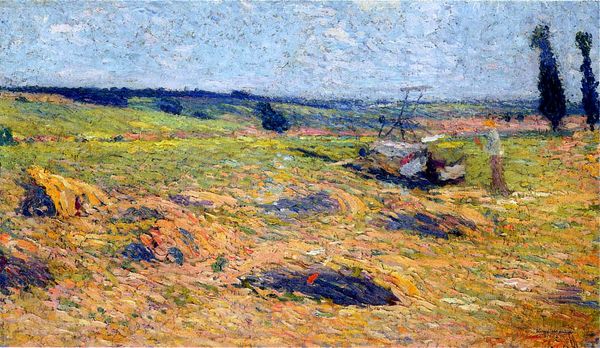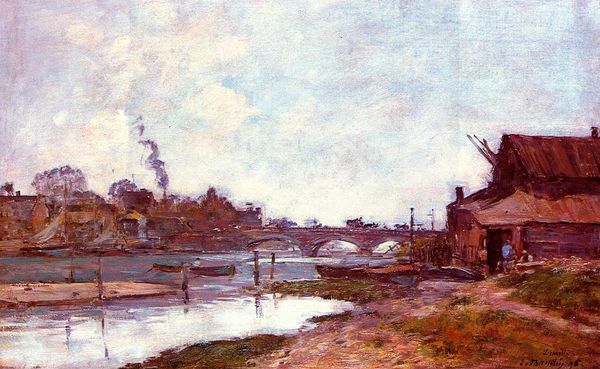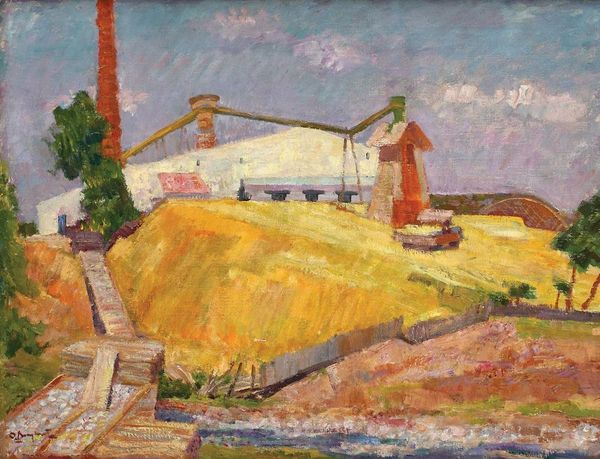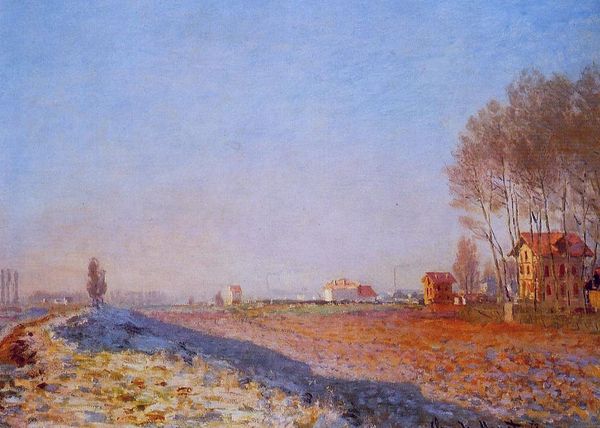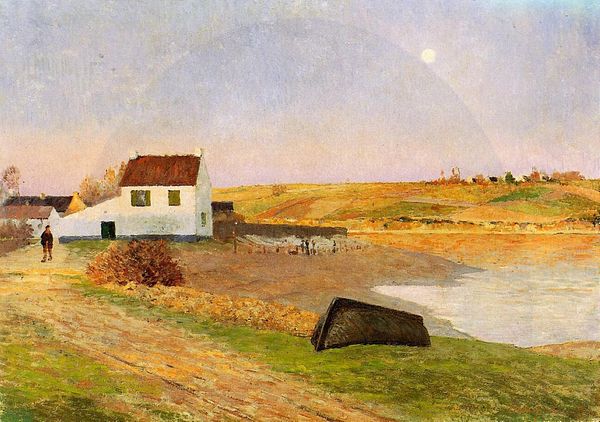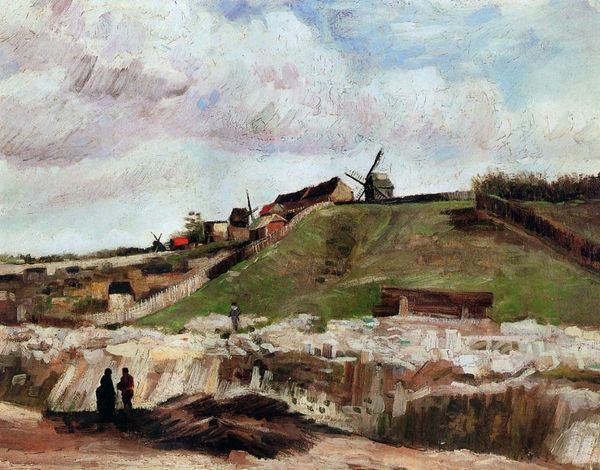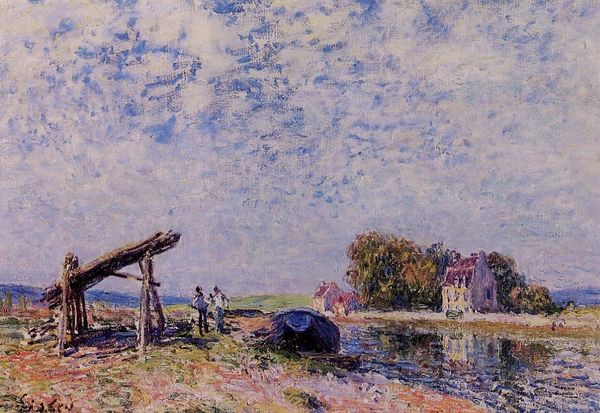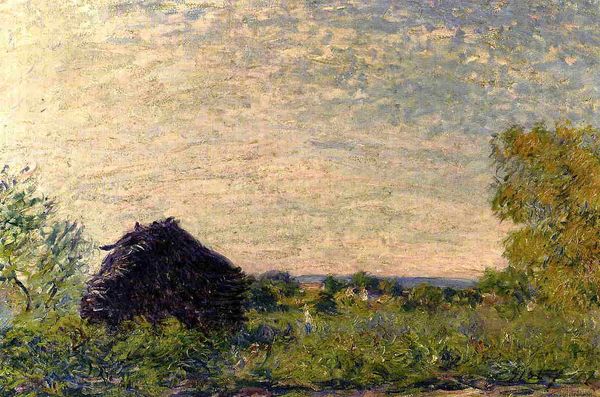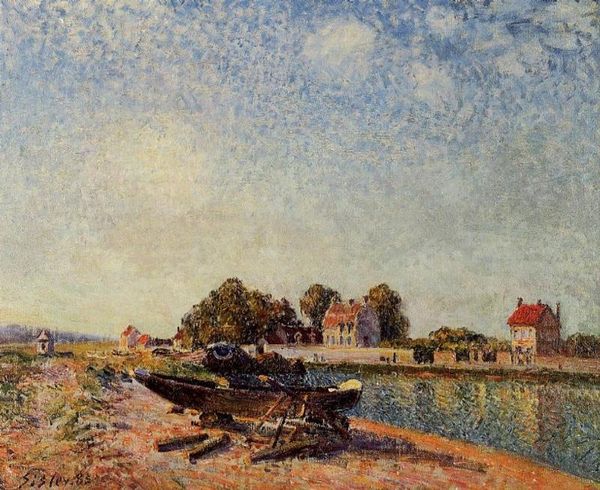
Copyright: Public domain
Curator: This is Ferdinand du Puigaudeau’s, "Landscape with Mill near the Salt Ponds," created around 1902 using oil paint. It has such an appealing open-air immediacy. Editor: The palette strikes me first; such high-keyed pastels. The shimmering, rectilinear shapes of the salt ponds in the foreground set up an interesting contrast with the softer forms of the landscape. Curator: It really showcases plein-air impressionism, doesn’t it? Consider the labor and the means: pigments manufactured, canvases stretched, all for capturing a fleeting moment. The artist leaving the studio to portray labor in a changing economic context. Editor: True, but focus for a moment on how the formal elements function: see the placement of that windmill. The upward thrust cleverly mirrors the pyramidal haystacks, while the rhythmic progression leads your eye into the composition, anchoring everything formally. Curator: Yet those haystacks, rendered in such impasto, represent labor and harvest—consider the socio-economic realities of rural life Puigaudeau aimed to portray and from what location. Where do you believe it was? Editor: Material concerns aside, I find it impressive how Puigaudeau organizes the entire landscape into receding planes of interest, each differentiated by texture and tone. That skillful juxtaposition suggests depth, no? Curator: Depth created by strategic color use and composition of salt ponds but remember that in salt harvesting, work was arduous, carried out by families shaping an enduring rural existence. Editor: Fair enough. Even knowing nothing of the material processes, one can simply revel in its sensory experience. Curator: I see in Puigaudeau’s composition a blend of labor and landscape. We see what they created for consumption in cities! Editor: And I perceive a compelling interplay of color and light that, ultimately, elevates the everyday into something visually remarkable.
Comments
No comments
Be the first to comment and join the conversation on the ultimate creative platform.

